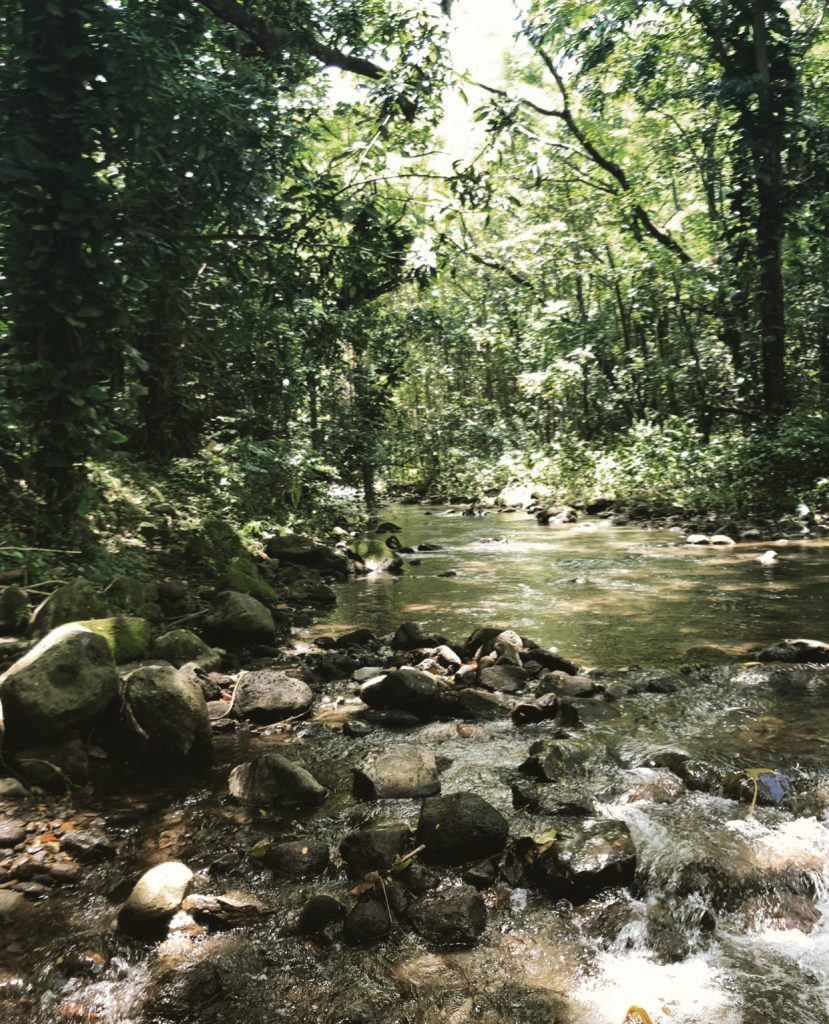
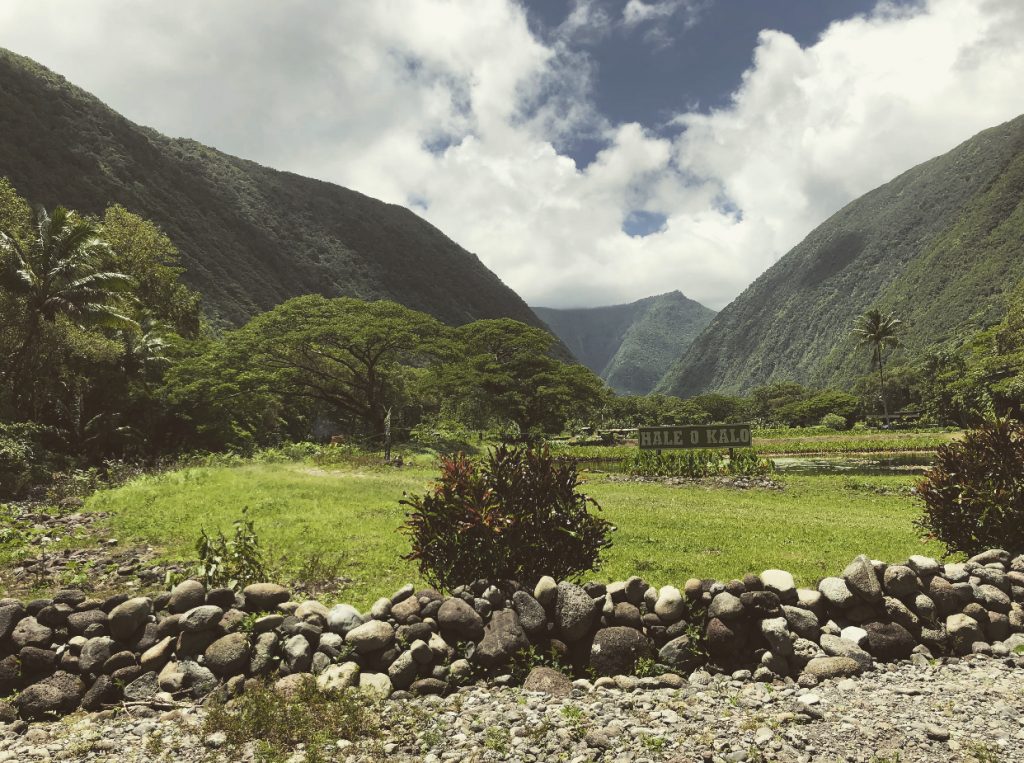
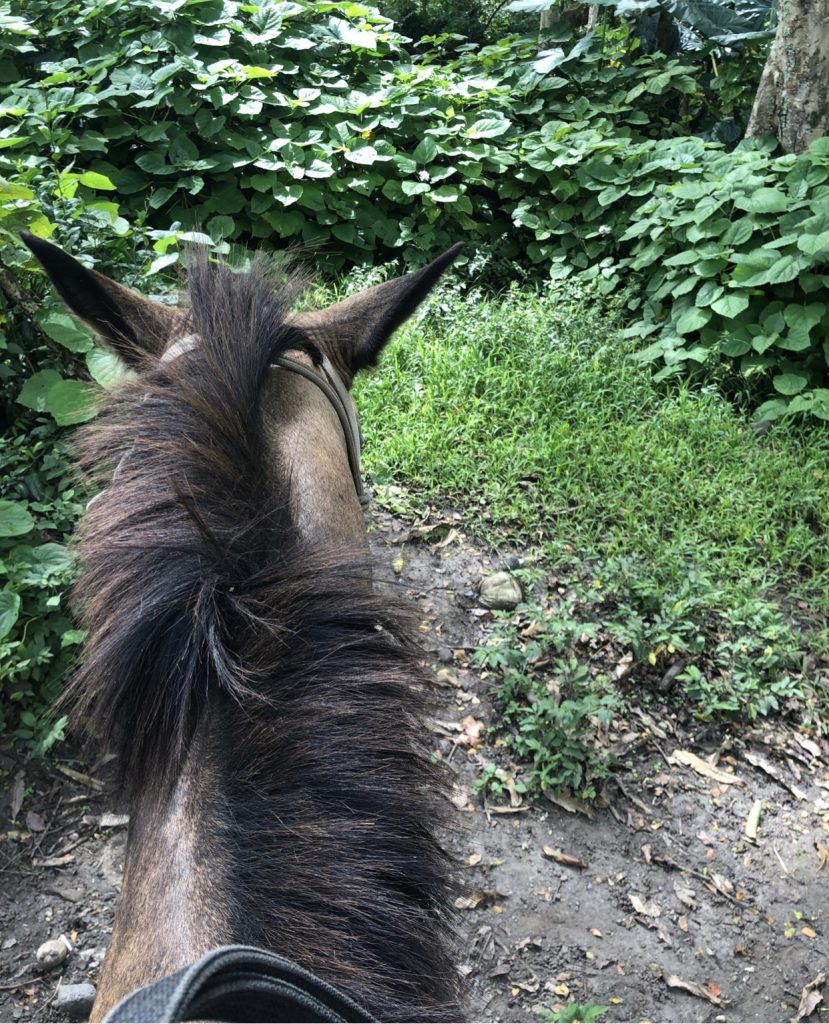
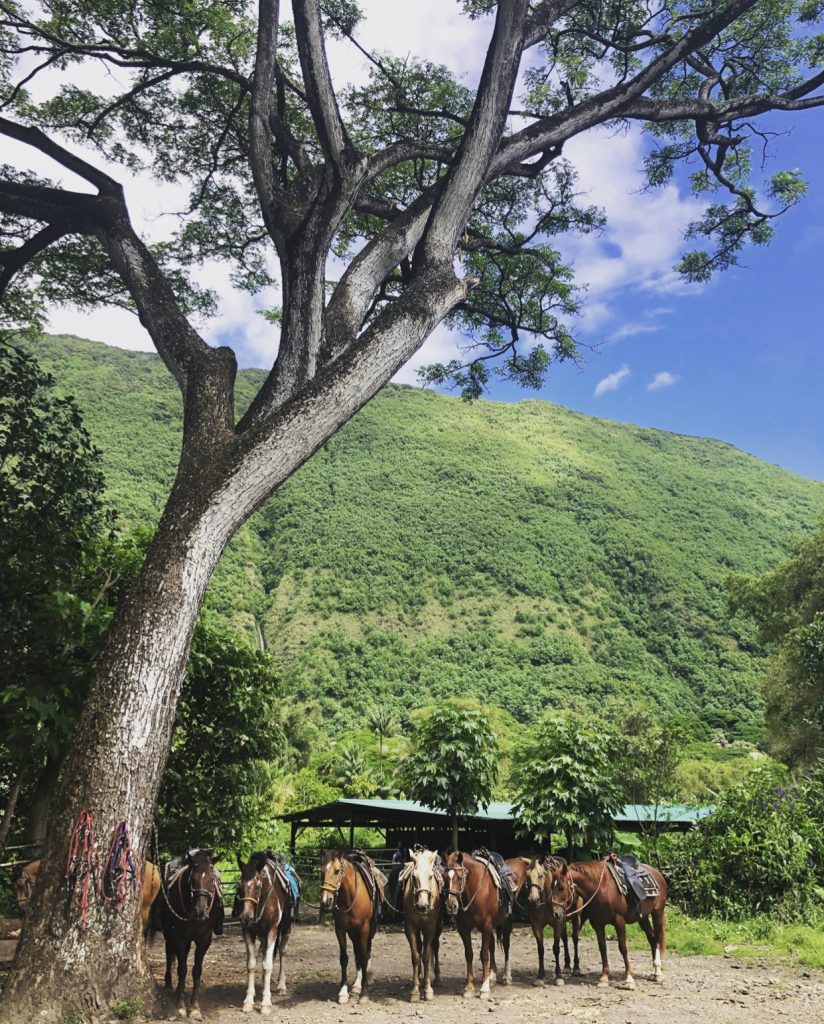
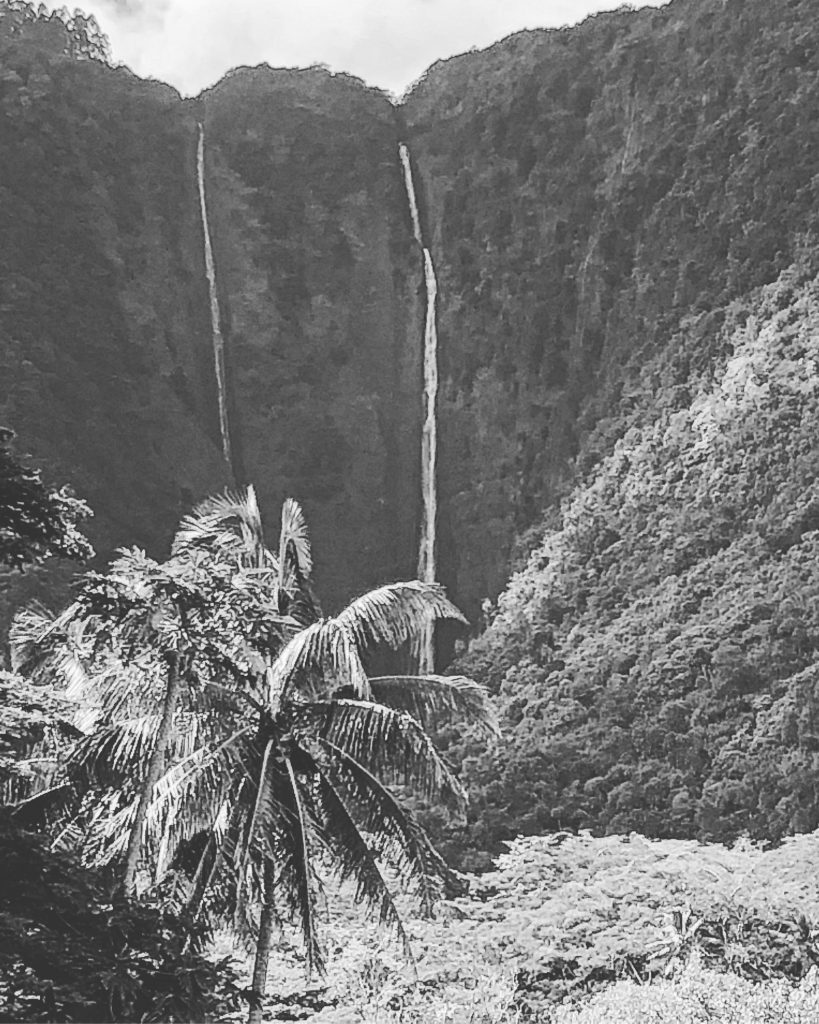
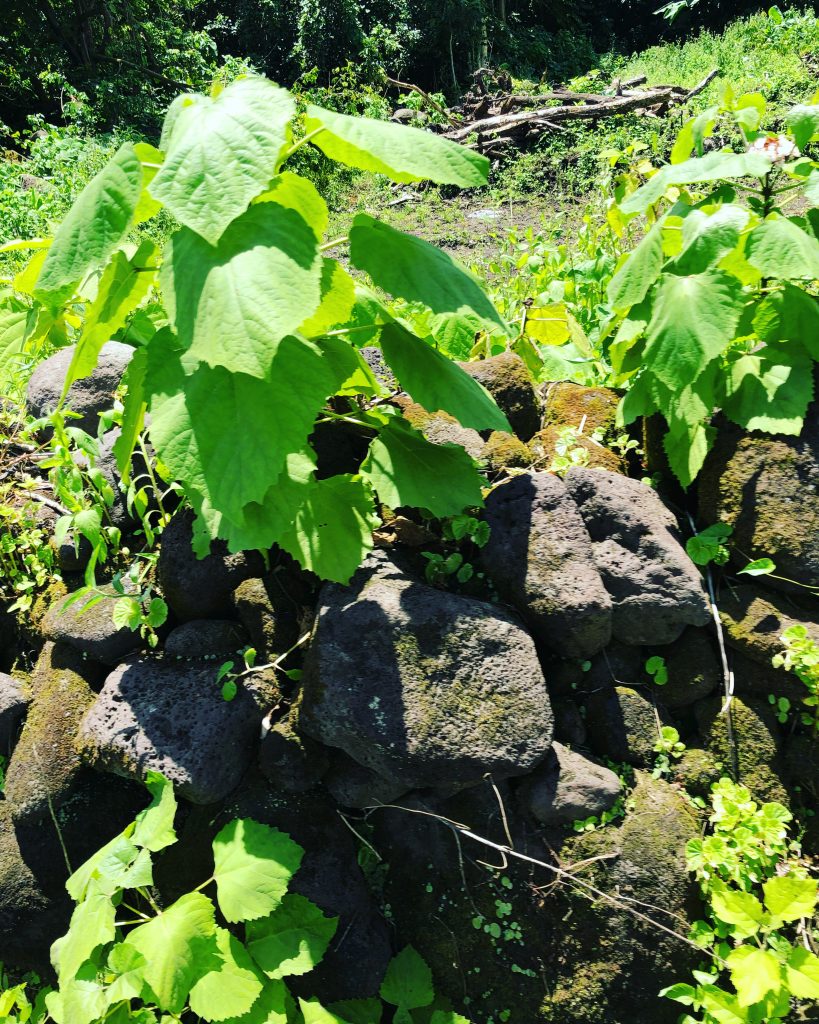
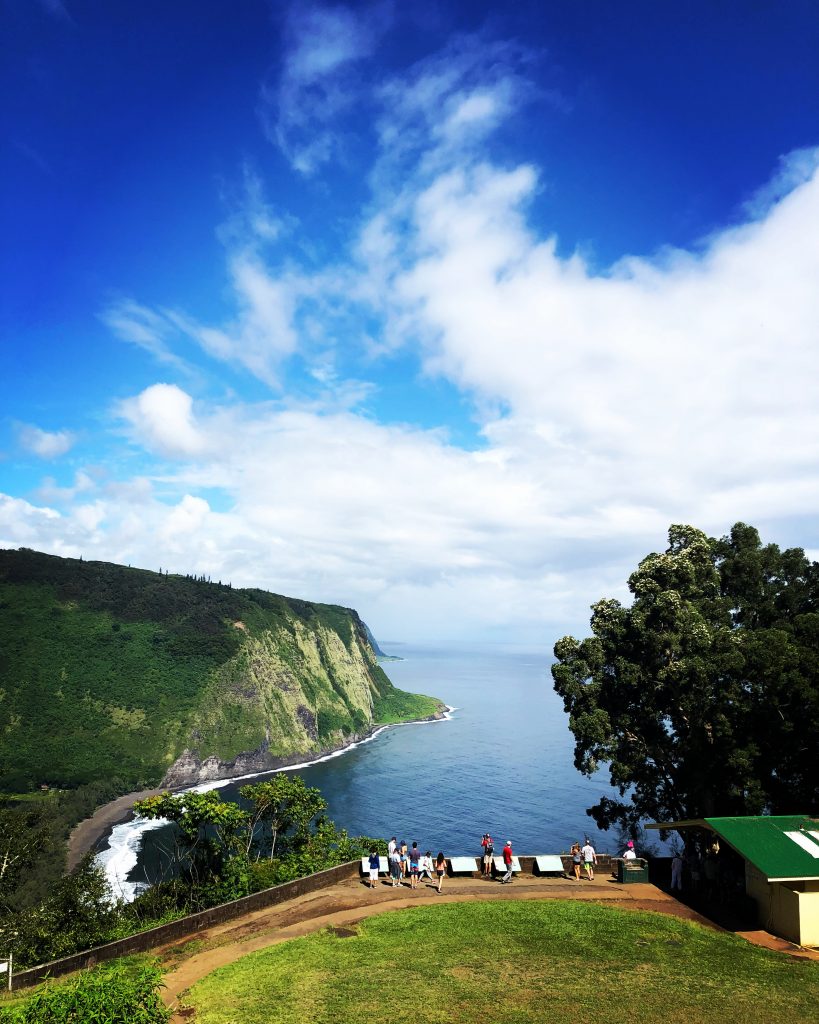
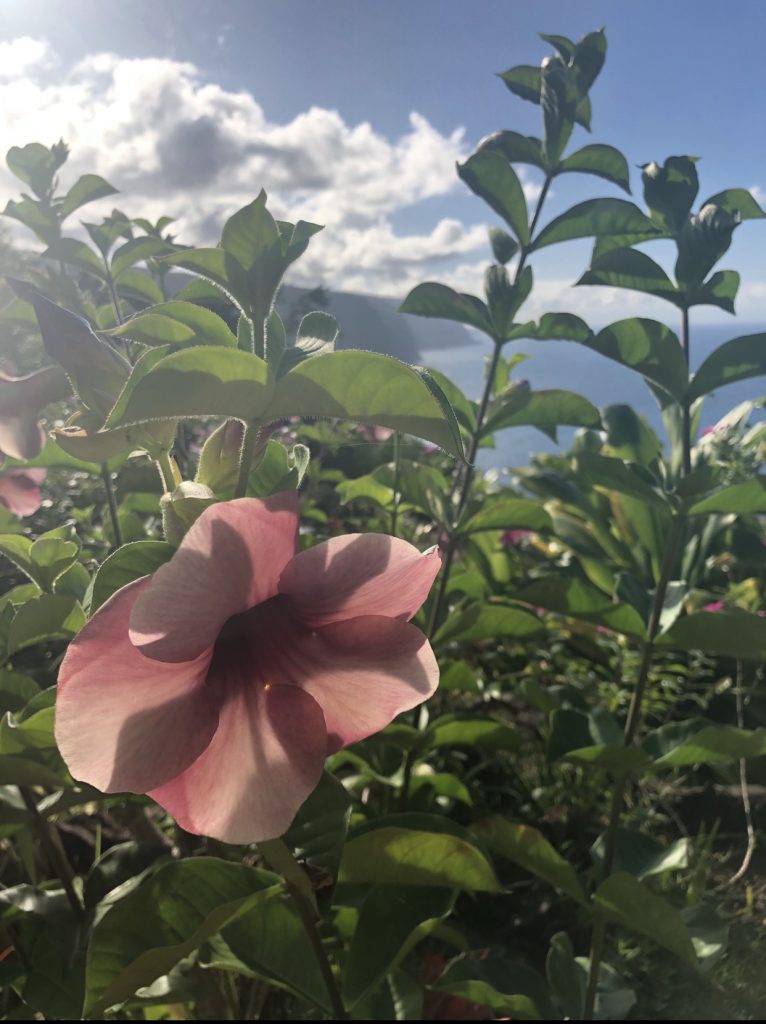
It is with great sadness that I share that Waipi’o Valley is closed, indefinitely.
I’ve experienced a range of emotions after hearing this news.
A part of me is happy, as these restrictions will allow the land to heal, and it will also allow for respect to be granted to this temple, due to a reduction in human occupation. At the same time, the other part of me is sad, as I have spent many years studying the land, waters and plants that grow here, and now, it will be difficult to engage with others and learn in commUNITY. In addition, I engage in ritual on this holy land every single year. My temple unites in prayer with the EArth in this sacred space. This valley has contributed to my peace, and to my yearly celebration of renewal, of which always includes the beauty of horses– the Chariots that always lead me to Magick within this portal of bliss.
This place is absolute Medicine to me.
I grieve:
—
And now I share a little more about the Magick of this place.
These pieces of two lovely articles that I found that goes over the Mystery of this sacred land.
Please feel free to check out all of the readings provided, if you feel called to learn more about this ancient and sacred temple.
Waipi’o Valley on Hawai’i’s Big Island
Valley of the Kings: A Brief History
The Waipio Valley is often referred to as the ‘Valley of the Kings’ because it was once the home to many of the rulers of Hawaii, and as a result, the valley has both historical and cultural importance to the Hawai’ian people.
According to oral histories as few as 4,000 or as many as 10,000 people lived in Waipi’o during the times before the arrival of Captain Cook in 1778; Waipi’o was the most fertile and productive valley on the Big Island of Hawaii.
It was at Waipio in 1780 that Kamehameha the Great received his war god Kukailimoku who proclaimed him the future ruler of the islands. It was off the coast of Waimanu, near Waipio, that Kamehameha engaged Kahekili, the Lord of the leeward islands, and his half-brother, Kaeokulani of Kaua’i, in the first naval battle in Hawaiian history—Kepuwahaulaula, known as the Battle of the Red-Mouthed Guns. Kamehameha thus began his conquest of the islands.
In the late 1800s, many Chinese immigrants settled in the valley. At one time the valley had churches, restaurants, and schools as well as a hotel, post office, and jail. But in 1946, the most devastating tsunami in Hawaii’s history swept great waves far back into the valley. Afterward, most people left the valley, and it has been sparsely populated ever since.
A severe deluge in 1979 covered the valley from side to side in four feet of water. Today only about 50 people live in the Waipio Valley. These are taro farmers, fishermen, and others who are reluctant to leave their simple lifestyle.
The Sacred and Mystical History of Waipi’o
Aside from its historical importance, the Waipio Valley is a sacred place for Hawaiians. It was the site of many important heiaus (temples). The most sacred, Pakaalana, was also the site of one of the island’s two major pu’uhonua or places of refuge, the other being Pu’uhonua O Honaunau, which is located just south of Kailua-Kona.
Ancient burial caves are located in the sides of the steep cliffs on either side of the valley. Many kings were buried there. It is felt that because of their mana (divine power), no harm will come to those who live in the valley. In fact, despite great devastation in the 1946 tsunami and the 1979 flood, no one actually died in those events.
Waipio is also a mystical place as many of the ancient stories of the Hawaiian gods are set in Waipio. It is here that the brothers of Lono found Kaikiani dwelling in a breadfruit grove beside the falls of Hi’ilawe. Lono descended on a rainbow and made her his wife only to later kill her when he discovered a chief of the earth making love to her. As she died, she assured Lono of her innocence and her love for him.
In her honor, Lono instituted the Makahiki games—a designated period of time following the harvesting season when wars and battles were ceased, sporting competitions and contests between villages were organized, and festive events were commenced.
Another story set in Waipio tells how the people of Waipio came to be safe from the attack of sharks. It is the story of Pauhi’u Paupo’o, better known as Nanaue, the shark-man.
Source:
Waipi’o Valley on Hawai’i’s Big Island
Author: John Fischer, 2000
Waipio Valley: Home of Demons, Demi Gods, and Despots
Hidden deep in the dark blue heart of the Pacific Ocean drifts the Hawaiian Archipelago. One of the youngest landmasses on the planet, made up of 137 volcanic islands covering an area of 1,500 miles (2,414 km). It is an enchanted crossroads of ancient and modern civilization, eastern and western cultures, and also a place where harsh mortality meets tranquil beauty. There are eight main islands, while Hawai’i Island gives its name to the entire archipelago. Commonly known as the Big Island, Hawaii is home to Waipio Valley, one of the most, if not the most, sacred locations on the islands.
There exists no high definition, digital technology that can adequately capture the natural glory of this place. Neither can any poetic words sufficiently describe it, no matter how masterful or divinely inspired the poet. The name of this rugged and remote valley means “curved water” in the Hawaiian language, a reference to the fresh river that flows from the back of the valley and out into the ocean. This river originates from several spectacular ribbon waterfalls that pour torrents down the sheer 2,000-foot-tall (610 m) cliff faces. These jagged, towering lava rock cinders are starkly contrasted by the exotic flora of the lush valley. Waipio is alive with spherical silver-sword flowers, Koa and sweet smelling white and yellow ginger flowers spilling their citrus aroma in the strong ocean breeze, and it is home to the rare, sacred Nioi or beach cherry tree.
The valley was the original throne of the ancient Hawaiian kings, who ruled from their stone heiaus (platform temples), and their grass palaces with four, 20-foot-tall (6.1 m) Nioi trees, all bejeweled with hibiscus blossoms. Many myths and legends of deities, demons, demi-gods, and despots emanate from this holy place.
Master storyteller William Drake Westervelt, in his book Myths and Legends of Hawaii, touches on two of the most famous of these wonderful tales:
In this valley dwelt the priest who in the times of Maui was said to have the winds of heaven concealed in his calabash. Raising the cover a little, he sent gentle breezes in the direction of the opening. Severe storms and hurricanes were granted by swiftly opening the cover widely and letting a chaotic mass of fierce winds escape. The stories of magical powers of bird and fish as well as of the strange deeds of powerful men are almost innumerable. Not the least of the myths of Waipio Valley is the story of Nanaue, the shark man, who was one of the cannibals of the ancient time.
Nannie: The Tragic Story of the Shark Man of Waipi’o Valley
According to Hawaiian religion, Kamohoali’i was the ancestral shark god. He was the brother of the infamous fire/lava/volcano goddess Pele, and the guardian of the ocean who dwelt in submerged caverns beneath the islands and frequented the waters near Maui. It was believed that he would guide ships lost at sea to safety if the proper offerings and incantations were made to him. The kahuna (shaman/priest) would be signaled by the thrashing of the deities tail in front of the fleet. The kahuna would then pour a libation of awa (a narcotic liquid concoction of the Kava plant) into the sea for him. Some traditions even hold that it was by this divination the Polynesians arrived at Hawai’i in the first place. Kamohoali’i , like many other ancient deities, possessed the capability to shapeshift and metamorphose into any living creature particularly those of the sea, and even, into a human from which form he would occasionally interact with humanity, like when he sired the infamous shark-man of Waipio Valley.
One day, while swimming near the valley, Kamohoali’i saw an exceedingly beautiful young woman named Kalei bathing in the surf. He was so smitten with her, he took mortal form, presenting himself as a chief from some distant island. He was welcomed openly by the people of the valley who were impressed with his lavish gifts, handsomeness, charm, and gamesmanship. He was offered his choice of wives among all the young women and he chose Kalei. He relocated her to a remote home near a lagoon that connected to the ocean where she bore him a son. Kamohoali’i revealed his true identity to his bride and the tragic news that he could not stay with her because he had to return to his underwater kingdom. He also informed her their son would not be wholly mortal. Having produced a demi-god, she would have to keep him isolated and never, ever allow him to consume the flesh of any land-dwelling animal.
When the child was born, Kalei noticed a curious, crescent shaped orifice between the boy’s shoulder blades, resembling a shark’s mouth. She dutifully followed the instructions of her absentee immortal lover, raising the boy on a strict diet of plants and fish always cautious to keep his genetic abnormality a closely guarded secret hidden under a regal, bright yellow and red feathered ‘Ahu ‘ula cloak, usually reserved for royalty. But once the boy became a young man, his mortal grandfather snuck him into the village while his mother slept. For the first time, he indulged in alcohol, pork, and chicken.
Shortly after, the crescent orifice on the boys back began growing rows of razorsharp shark’s teeth along with an insatiable appetite for red meat. So ferocious was this appetite, he became compelled to stalk, kill, and devour human beings. The more red meat and human blood he consumed, he became more powerful, capable of transforming into a shark. He began appearing in villages covertly inquiring where the best swimming holes or fishing spots were, only to transform into a shark and ravage the locals at those very spots. The villagers became suspicious of so many shark attacks, they knew something supernatural was afoot.
One day, the king drafted all able-bodied young men on the island to participate in a cooperative effort of manual labor. Nanaue of course, did not show up, but the king happened to be travelling and crossed paths with him. The king demanded to know why he was not participating in the project, and Nanaue said because his father was chief of a distant island it did not apply to him, but the king, although impressed by the lad’s confidence and regal cloak, commanded him to participate. When Nanaue arrived and began working, the other young men hazed Nanaue and pulled off his cloak, it was then they discovered his monstrous shark mouth abnormality. The connection between so many devoured villagers and this shark man came crashing down, and the mob erupted with anger lynching him as a criminal.
He was carried off, bound, beaten, and a ceremonial oven was constructed for his execution. He was roasted alive as sentencing for his many murders and his flesh was itself consumed by the nobles so that his mana, a term to describe his life force or essential energy, could be absorbed. It is said that when the ashes from the oven settled into the sea, a unique, silver moss grew upon the lava rocks and exists there even today.
Waipi’o Valley: Portal to Lua-O-Milu, The Land of the Dead
In ancient Hawaiian religion, it was also believed that Waipio Valley was a portal to the underworld or Lua-o-Milu, the land of the dead. The tradition tells that atop a specific cliff resides a special from which the soul of the deceased would leap and descend down into the realm of Milu. Milu was the deity of death, ruler of the underworld, and his name was synonymous with realm itself, virtually identical to the Greco-Roman tradition and the deity/realm Hades. The tradition goes on to suggest that this subterranean entrance has long since been buried beneath the black sands deposited over millennia of sweeping ocean tides. According to the natives, spirits of the dead can and do observe the living from this realm, rewarding honorable deeds of their ancestors and can likewise punish them by turning the living into stone by staring at them with discontent.
While the concept of a portal to a mysterious subterranean realm hidden beneath the sands certainly seems fanciful, it’s worth noting that there may be some significant synchronicity here between science and superstition. As reported by the San Francisco Chronicle’s science editor David Pearlman, scientists from the Berkeley Geochronology Center and their many colleagues have uncovered the geophysical fact that the Hawai’ian Islands are gradually sinking. “The islands, said Warren Sharp, a geochemist at the geochronology lab in Berkeley, are all just passively riding on that Pacific plate. The moving hot spot formed them, the plate carries them, and over time they will all disappear.”
In other words, the local myth about a great chasm or volcanic tube that descends deep into the recess of the earth buried beneath the sands in prehistoric times actually has some scientific validity. In that same vein, the existence of some unknown subterranean realm might not be so far fetched either. For all the scientific and technological advances of modern civilization, very little can be definitively known about what lies deep beneath the surface of the earth; in fact, scientists know more about the lunar surface than they do about what lies under our feet.
Scientists such as Edmond Haley, of Haley’s Comet fame, and Charles Hapgood theorized in the essay Earth’s Shifting Crust that the earth may be hollow or layered with varying strata creating entire ecosystems beneath the earth’s surface. Conventional academia rejects these theories; however, Hapgood’s theory was endorsed by Albert Einstein who wrote the forward, and Haley’s contributions to astronomy, oceanography, and geophysics are irrefutable. The so-called “prophet of science fiction,” Jules Verne, also speculated that volcanic tubes could be accessed and might lead down into these subterranean ecosystems. This would be dismissible as mere fiction if so many of his other speculations had not come true with uncanny accuracy.
The Lost Tomb and Treasure of King Kamehameha
When the smoke cleared after a series of gruesome battles in 1810, King Kamehameha I emerged as the sole ruler of a United Hawai’i. He established diplomatic relationships with European countries and the United States. He utilized goods collected as taxes to resupply ships from Britain, Spain, and Boston who were making the long merchant voyage to China. Initially, Kemehameha could only offer fruit, fresh water, meat, and companionship to refresh the sailors in the midst of their long journey, but they soon discovered that the islands were filled with a precious resource that the Chinese desperately coveted: sandalwood.
Sandalwood trees are the primary ingredient in Buddhist incense ceremonies and many traditional Chinese medicine potions. The relatively infinite demand and tremendous scarcity of the tree made this trade monopoly extremely profitable for the King. Kamehameha’s greed got out of hand, driving his subjects into a great famine and practically driving the species into extinction. When the despot passed away, his remains were concealed according to the strict, ancient tradition of hunakele, which involved a predesignated undertaker, someone who had attained the utmost trust of the king, who would await the remains in a canoe and under the cover of darkness, would spirit them away to a preselected cave, usually atop a treacherous cliff face accessible only by sea.
In some cases, the great loyalty of this trusted undertaker would be displayed by their suicide once the deed was complete so as to never disclose the location of the gravesite. To this day, King Kamehameha I’s hidden tomb has never been discovered. Many theories abound as to its secret location. Some say he was buried along with many other ancient royals within Maui’s sacred Iao Valley. Others insist his favorite fishing pond was drained, he was sealed beneath it, and then it was filled in again. Kamehameha I was from the Big Island, Hawai’i. He grew up there and he died there, having worshipped the ancient deities. There’s no doubt he had great reverence for Waipio Valley, the home to so many legendary figures and deities, whose cliff faces do contain many ancient, royal burials.
What wondrous treasures would be found in this hidden tomb? A trove of chests filled with Spanish gold and silver coins, Chinese pearls and silk, jade dragon figurines, Columbian emeralds, rubies from India, black powder weapons from America, the finest perfumes from France, and his bones neatly packed into a finely woven basket resembling a demonic face, inside of which the bones would be wrapped in a vivid, florescent ‘Ahu ‘ula cloak of vibrant red and yellow feathers plucked from exotic and extinct species of birds. What better place for such a marvelous lost treasure than this magical valley?
Source:
Waipio Valley: Home of Demons, Demi Gods, and Despots
Author: Mark A. Carpenter, 2020
Additional Readings:
The Shark Man
Hawaiian Ghosts, Spirits, and the Stories that Keep Them Alive